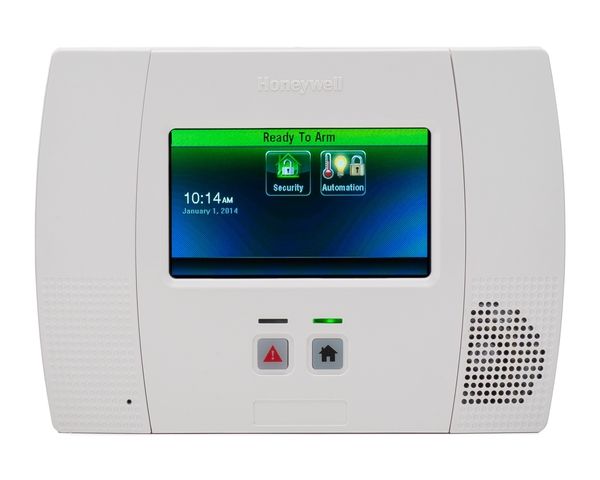New Honeywell Home PROA7PLUS Kits Available from Alarm Grid
PostedWe are thrilled to announce that new Alarm Grid System Kits featuring the Honeywell Home PROA7PLUS System are now available! We have twelve (12) kits in total, split into four (4) main categories, with options available for users in most situations. They're ready for your home or business!

UPDATE:
As of Firmware Version 3.591.92.0, the Honeywell Home PRO Series panels all support local programming through the keypad. You can read full details about this exciting firmware update here.
If you aren't familiar with the PROA7PLUS, then we strongly recommend reviewing this introduction post and buying guide, as it will really help you get acquainted with the latest Resideo Security System. For this post, we mainly want to focus on the new kits, so that is what we will do.
Potential buyers should keep in mind that the PROA7PLUS does NOT support local end user programming at this time, though we have received word from Resideo that the feature is coming. And while we do not have a firm answer on Apple HomeKit compatibility, we suspect that HomeKit support will be coming later down the pipeline. Remember that the Honeywell Lyric and its system kits DO support local end user programming and Apple HomeKit, so that can be a really good alternative if you don't want to wait for Resideo to get their system ready.
With that out of the way, here are the kits! Like we said earlier, there are four (4) distinct categories, with three (3) system kit options in each category. Basically, in each category, you are choosing an IP-only option OR a dual-path IP & LTE cellular option with either AT&T OR Verizon. Find the category that makes the most sense for you, and then choose - IP-only, Dual-Path AT&T & IP, or Dual-Path Verizon & IP.
Remember that if you go dual-path, you will need a monitoring plan with cellular connectivity, such as an Alarm Grid Gold or Platinum Level Plan (Self or Full). We always recommend the use of cellular backup, as it is the only way to keep your system connected for monitoring service in the event of an internet outage. But whether you ultimately go with IP-only or dual-path is up to you. As a reference, the cellular communicator options for the PROA7PLUS are the PROLTE-A (AT&T LTE) and the PROLTE-V (Verizon LTE). And make sure that your monitoring plan includes access to Total Connect 2.0 if you want to control the PROA7PLUS System remotely from your phone or a web browser!
The first category we have is our 3-1 PROA7PLUS Kits. These include the PROA7PLUS System, three (3) PROSIXMINI3 Door and Window Sensors, one (1) PROSIXPIR Motion Sensor, and a Honeywell LT-Cable. These are great for smaller homes and apartments where only a few sensors are needed.
- Honeywell Home PROA7PLUS031 - PROA7PLUS Encrypted 3-1 Base Kit: System, 3 D/W Contacts, 1 Motion, LT-Cable
- Honeywell Home PROA7PLUS031A - PROA7PLUS Encrypted 3-1 AT&T Kit: System, 3 D/W Contacts, 1 Motion, Communicator, LT-Cable
- Honeywell Home PROA7PLUS031V - PROA7PLUS Encrypted 3-1 Verizon Kit: System, 3 D/W Contacts, 1 Motion, Communicator, LT-Cable
Next, we have our 10-1 PROA7PLUS Kits. These include the PROA7PLUS System, ten (10) PROSIXMINI3 Door and Window Sensors, one (1) PROSIXPIR Motion Sensor, and a Honeywell LT-Cable. These are great for larger homes and businesses where many sensors are needed.
- Honeywell Home PROA7PLUS101 - PROA7PLUS Encrypted 10-1 Base Kit: System, 10 D/W Contacts, 1 Motion, LT-Cable
- Honeywell Home PROA7PLUS101A - PROA7PLUS Encrypted 10-1 AT&T Kit: System, 10 D/W Contacts, 1 Motion, Communicator, LT-Cable
- Honeywell Home PROA7PLUS101V - PROA7PLUS Encrypted 10-1 Verizon Kit: System, 10 D/W Contacts, 1 Motion, Communicator, LT-Cable
Then, we have our Wired Upgrade PROA7PLUS Kits. These include the PROA7PLUS System, a PROSIXC2W Wired to Wireless Converter, and two (2) Honeywell LT-Cables. These are great if you are upgrading to the PROA7PLUS from a wired alarm system, and you want to keep using your existing hardwired sensors.
- Honeywell Home PROA7PLUSW0TAKE - PROA7PLUS Wired Upgrade Base Kit: System, Converter Module, Two (2) LT-Cables
- Honeywell Home PROA7PLUSW0TAKEA - PROA7PLUS Wired Upgrade AT&T Kit: System, Converter Module, Communicator, Two (2) LT-Cables
- Honeywell Home PROA7PLUSW0TAKEV - PROA7PLUS Wired Upgrade Verizon Kit: System, Converter Module, Communicator, Two (2) LT-Cables
Last, we have our Wireless Upgrade PROA7PLUS Kits. These include the PROA7PLUS System, a PROTAKEOVER Legacy RF Receiver Module, an a Honeywell LT-Cable. These are great if you are upgrading to the PROA7PLUS from a wireless alarm system, and you want to keep using your existing compatible wireless sensors.
- Honeywell Home PROA7PLUSWLTAKE - PROA7PLUS Wireless Upgrade Base Kit: System, Legacy RF Receiver, LT-Cable
- Honeywell Home PROA7PLUSWLTAKEA - PROA7PLUS Wireless Upgrade AT&T Kit: System, Legacy RF Receiver, Communicator, LT-Cable
- Honeywell Home PROA7PLUSWLTAKEV - PROA7PLUS Wireless Upgrade Verizon Kit: System, Legacy RF Receiver, Communicator, LT-Cable
Like always, if you have any questions about compatibility, or if you are interested in signing-up for new monitoring service, then please email us at support@alarmgrid.com. We are here to help you from 9am to 8pm ET M-F. We look forward to hearing from you and helping you get started with your new PROA7PLUS Alarm Panel!

 Alarm wiring is needed to complete the connection between the panel and its plug-in power transformer. Traditionally, users had to strip and prepare their own cabling, which made the process more tedious and difficult. But with prepared cabling like the Honeywell LT-Cable, the process is made much easier, and it really will work with nearly any
Alarm wiring is needed to complete the connection between the panel and its plug-in power transformer. Traditionally, users had to strip and prepare their own cabling, which made the process more tedious and difficult. But with prepared cabling like the Honeywell LT-Cable, the process is made much easier, and it really will work with nearly any 





